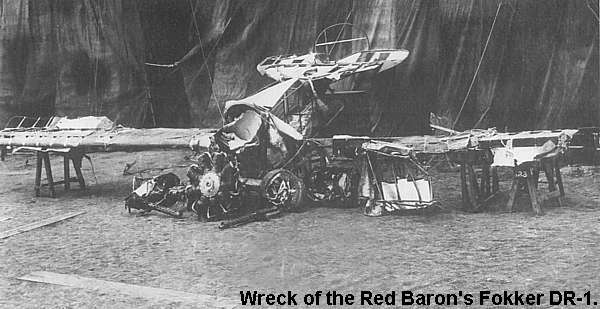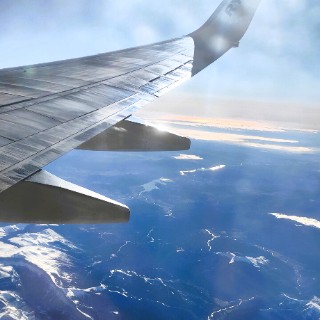
Dropped by Hobby Lobby yesterday and had to pick this up:

It'a a Sopwith Camel in 1/48th so perfect to go along with 28mm WGA WW1 WW1 Infantry. With the customary Hobby Lobby 40% off model kits it came to about $5.75 if I remember rightly.
It should make a great piece of terrain as a crash in no man's land.
Googled some crashed WW1 aircraft images and the wrecks could range from a tangled mess:

to largely intact:

I'm probably going to go with the very common nose down, tail up (this sounds like a Hip Hop song but isn't) crash.


Maybe with a lower wing ripped off to make a seperate piece of scatter terrain.
Kinda half way between this:

and this:

Anyway, wanted to share a affordable, mostly assembled and painted piece of cool scatter terrain to use with your WGA WW1 Infantry.
It would be awesome if WGA made a crashed aircraft terrain piece.
Similar to this beautiful model:

Or this hobby classic:


A crashed aircraft and trenches would really support the WGA WW1 Infantry. And would be a fantastic inclusion in a WGA WW1 Box Game.
I'd vote for a German Halberstadt CL II, it would work for a crashed airplane, or better yet, a ground attack aircraft.
A British Dehavilland DH-5 would be a good choice for the Allies. I don't know if the French had a dedicated ground attack airplane.
@Mark Hoffman
Crashed Halberstadt CL II makes sense.

This would be a great terrain piece - a half aircraft sticking out of a crater you could pour resin into:

Sarissa Precision have a Fokker DR1, a Sopwith Camel, a Nieuport 17 and a SE5A in 28mm made out of MDF and card. Reviresco have 7 different Fokker DVII's in 1/64 scale . Model Power had a line of diecast Postage Stamp series aircraft, with a Sopwith Camel, Fokker DR1 and Nieuport 28 in 1/63 scale. I believe they are out of business, but you can still find them on E-Bay. Another company, Davon(?) and another company have them on E-Bay also, if anyone is looking for Great War aircraft
After giving it some thought:
I think a WGA crashed terrain piece of an early war German observation plane would give you the most bang for the buck.
1. All of WGA's current WW1 Infantry are early war.
2. The Germans were present on almost every front.
3. German observation planes were in action from the first days of the war on both the Western and Eastern fronts.
4. An aircraft crashed in the early war could theoretically still be there in the late war. Making the terrain piece useful for the whole war.

The truly archaic, semi-Victorian look of the bird goes well with the still vaguely semi-Victorian uniforms of 1914.

@Mark Hoffman
There is a A LOT of choices on 1/48 plastic too:
https://www.hobbylinc.com/1:48-scale-world-war-i-plastic-model-airplanes
Just depends how much you want to spend and how complicated you want a kit to be that you are going to model crashed into the ground.
I like the prepainted, dozen part, $6.00 Hobby Lobby option ;)
@JTam
I disagree with your statement about Wargames Atlantic's World War One range. Both the French and German sets are late war, not early war. The boxes they come in are dated, 1916 to 1940 for the French,and 1916 to 1918 for the Germans.Sure, the sets include the French kepi and German pickelhaube, but the German uniform is the late war bluse, not the early war waffenrock,and the French are modeled with leg wraps,not the taller leather boots of the early war period.
Not to start up the scale debate again, but I believe that 1/48 scale is too big for 28mm, that is why I posted the planes that I did. I am well aware of 1/48 scale WW1 aircraft kits, and have some in my collection, but do not use them for wargaming.
Camels were very common ground attack aircraft, and the RAF usually engaged over German lines. A wrecked Camel would be extremely appropriate.
That Hobby Lobby option would be a damn sight easier to assemble than the 1/144 Valom kit I'm currently working on...
Those mostly intact nose down ones, and the one where it's on its back are likely failed landings or even takeoffs, and taken at the aerodrome. Coming in from any altitude, they crumple like the wood frame and fabric confections they are. The various wires that rig the wings together also make it unlikely that a wing would detach completely.
There may be a bit of a selection bias on the photos - most would have been taken near bases. Planes bought down while strafing or bombing trenches would likely be at top speed, and forced down crew were expected to set fire to their bird with a Very flare (it happened, but usually the crew were in no fit state to do so, even if they survived).
One touch you could do is model it with souveniers stripped away (unit markings and serial numbers in particular. Richtofen's Fokker - which landed more or less intact - was famously stripped to the bone by our thieving Australian infantry...

I repeat. THIS PLANE LANDED INTACT! All that damage was done by souvenier hunters!!!
@Mark Dewis
Fantastic post. Fact filled. Well reasoned. I appreciate the info.
I found an account where an aviator describes being forced down among the trenches with minimal damage to the aircraft:
I'm listening to Pete & Gary's Military History | Ep122: Arras Air War - The Fight Goes On on Podbean, check it out! https://www.podbean.com/ea/dir-pjm5k-13c53a12
Starts right around 7 minutes, 28 seconds.

Hobby Lobby has a new kit in stock. A Fokker D.VII:

Unfortunately the model kits aren't 40% off right now.
They (Hobby Lobby) have some great kits for WW2 terrain/use as well.
Maybe your Panzer Lehr can fight past a crashed P-51.

There's also a P-40 kit.

Found a picture of the kit built up and detailed:

Just painting the canopy framing helps a lot.
Maybe one could make an entire airfield table like so:


Top tip - The Dust47 Quonset huts are still available and cheap. Otherwise they are pretty easy to scratch build.































